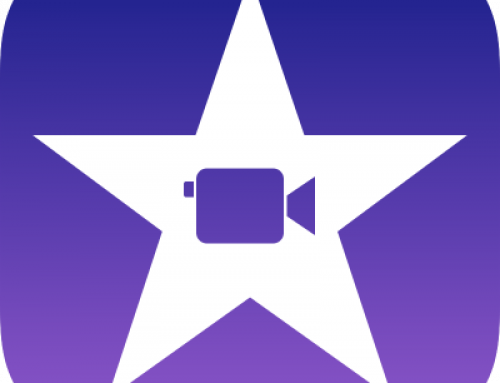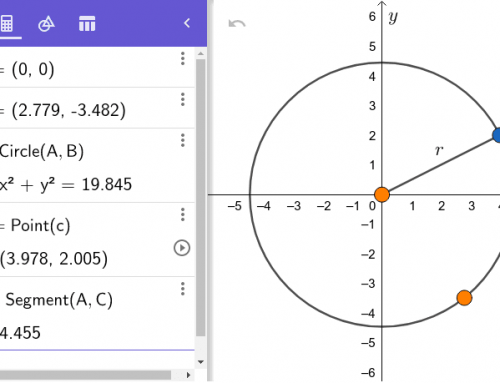Main subject: ICT
related subject: Languages, Art, ICT, Crafts
Duration: 80 minutes.
Age groups: Age 11, Age 12
Submitted by: Kaire Kollom-Vahtra, Estonia
Learning objectives:
• Finishing of works and principles of maintenance of textile objects (repetition). • The student knows how to use school and personal digital tools to save, record or photograph their work • Creation of a joint virtual exhibition in the Padlet environment • The student handles digital tools skillfully and prudently • Knows how to communicate safely in online. • The agreements about which websites we visit continue to apply. • The student knows who to turn to in case of technical problems
Implemented digital tools:
Google search engine Video viewing environment (youtube.com) Web-based software Padlet.com Google Forms
Supported digital competence for student:
Information and data literacy, Communication and collaboration, Digital content creation, Safety, Problem solving
Elaboration of the competences:
1.3 Data, information and digital content management: The learner saves, records and plays back the information found and simpler digital content with the help of a teacher. 1.3.3. Retrieves stored content from the device, using teacher assistance if necessary. 2.1 Communication by digital means: The learner interacts with a limited and open user community in digital environments under the guidance of the teacher. 2.2 Sharing data, information and digital content The learner shares the information found and the content created in the chosen digital environment and in limited user environments with the help of a teacher. 2.2.1. Distributes documents and pictures in a digital environment chosen by the teacher using the teacher’s help. 2.4 Cooperation in the digital environment The learner collaborates with others in a given environment, using the teacher’s help. The learner creates interactive digital content in collaboration with fellow learners, using teacher assistance. 2.4.2 Uses simpler smart applications or programs selected by the teacher, following agreed rules. 2.5 Polite behavior in the digital environment- Under the guidance of the teacher, the learner understands and implements the agreed norms of behavior in the private and public digital environment. The learner understands and explains the consequences of unethical behavior in digital communication through guiding questions. 3.1 Digital content development: The learner creates and formats simpler digital content with the help of the teacher. 4.2 Protection of personal data and privacy: The learner can use reasoning questions to justify why sensitive information about himself or herself and others should not be published in a public environment. The learner knows the most important principles of personal data and privacy protection 5.1 Troubleshooting: The learner seeks help when a digital tool or application does not work 5.1.11. Knows and can (dare) ask for help 5.3 Innovations using digital solutions: The learner uses digital technology in photography and filming with the help of a teacher. The learner uses digital technology for creative purposes.
Preparation:
This is a continuation of the lesson plan “Creating an embroidery pattern using a digital environment“ and “Creating a hashtag“ The teacher explains what kind of work he/ she expects from the students (a task description). Joint debate: We recall what our goals were at the beginning of the period 7 weeks ago and how we planned to end the issue of embroidery. All the embroidered pictures are ready, so it’s good to show them to others and create a virtual exhibition. The teacher prepares the smart devices for the students, checks that everything is available and working The teacher makes agreement with the students on which websites we visit, students know the rules and can behave safely The teacher agrees with the school’s educational technology to participate in this lesson as an assistant teacher The teacher prepares questions for feedback, which the student can answer both orally or in writing (or using GoogleForms)
introduction
The teacher explains the assignment to students: what are they going to do in this lesson and what are the learning outcomes what to look out for. The teacher needs to use computer with internet and a projector.
Implementation:
In this lesson we are using computer class and desktop computers. At the beginning of the lesson, each student finds a place for a desktop computer and logs in. (Everything requires patience) 1.Joint debate and discussion with students: We recall what our goals were at the beginning of the period 7 weeks ago and how we planned to end the issue of embroidery. All the embroidered pictures are ready, so it’s good to show them to others and create a virtual exhibition. 2. The student knows how to use school and personal digital tools to record or take pictures of their work. If something doesn’t work, how do you fix it? Cooperation of students in photographing finished works. Adjust the finished work so that you can take pictures. We observe light and shadow (window light vs. artificial light). For photographing we use the school’s digital tools as well as the teacher’s and students’. 3. Watching the video together and translate the tutorial video: How to upload a picture to Padlet’s wall (in English): https://youtu.be/aZetjCeAIYk 4. The teacher also logs on to the computer with his/ her school account and shows the lesson task on the wall with a projector: *Find a picture of your work on the school server (computer class) *Upload the image to the Padlet wall. *Add a name and hashtag to your work *Write a comment on the picture of your classmate that you like about his or her work. 5.The Teacher now shows a link to the Padlet on the projector wall and asks the students to open it. We watch the tutorial video again on how to add a picture to Padlet’s wall, and step by step everything is done together according to the instructions. The teacher often presses the pause button on the video and checks that everyone can upload their pictures. The teacher also has asked the school’s educational technologist for help to reach all the students. 6.At the end of the lesson students give feedback about the lesson and the tasks to the teacher. Students can answer either orally or in writing by using GoogleForms
Conclusion:
At the end of the lesson students provide feedback on their progress and today’s topic is being discussed. Each student can reflect on their result, which was easy and what was difficult.
Implemented needed devices:
Teacher need computer with internet connection and projector to show the picture on the wall Students need computer with internet connection



